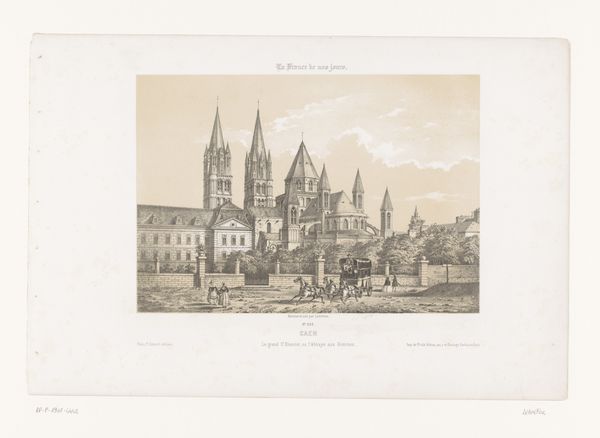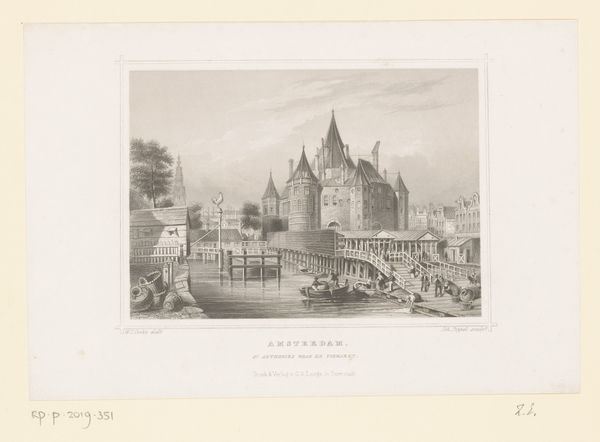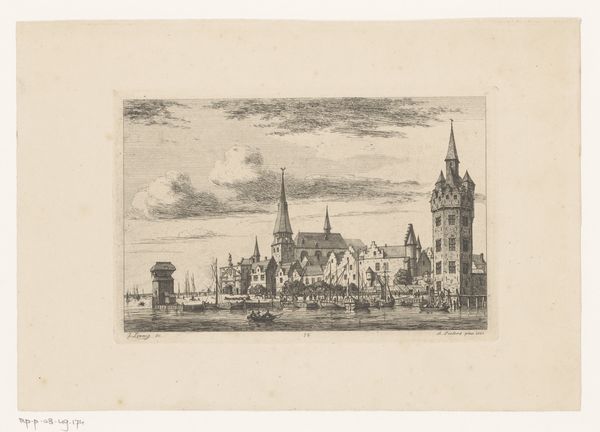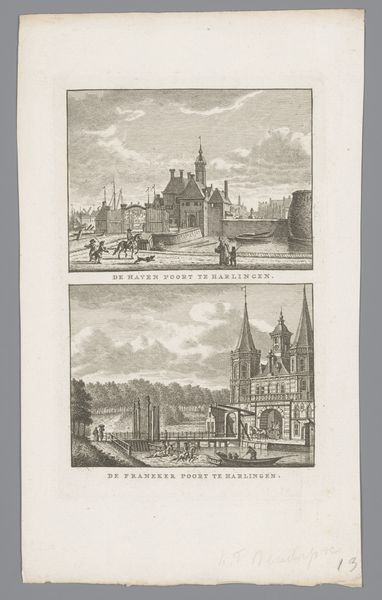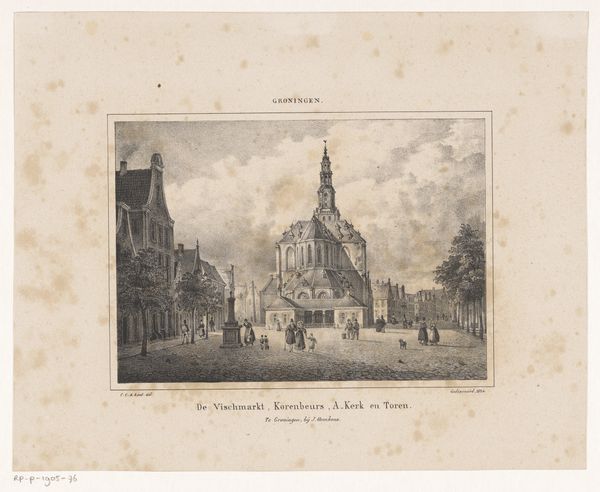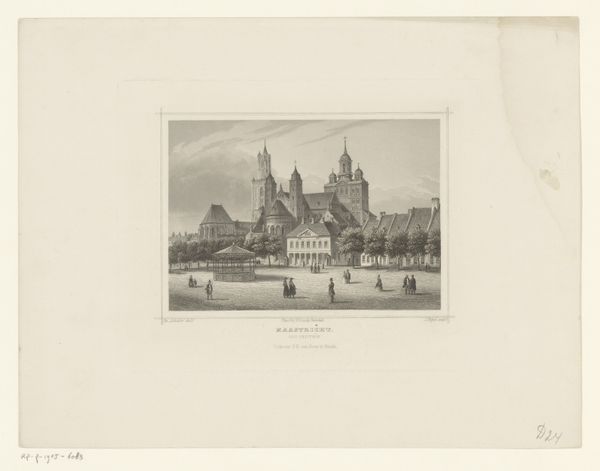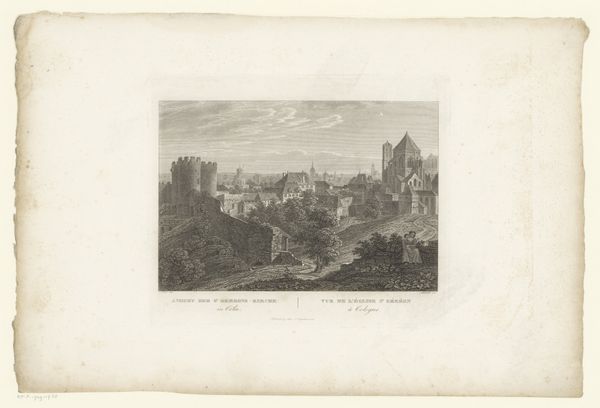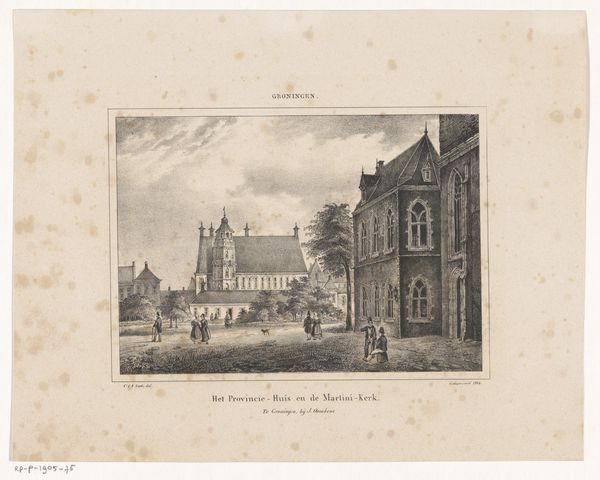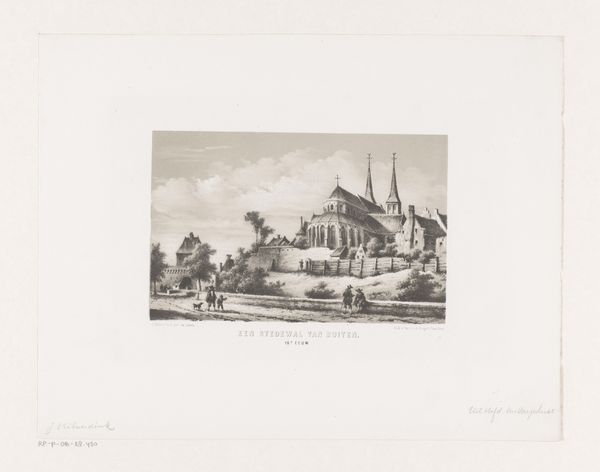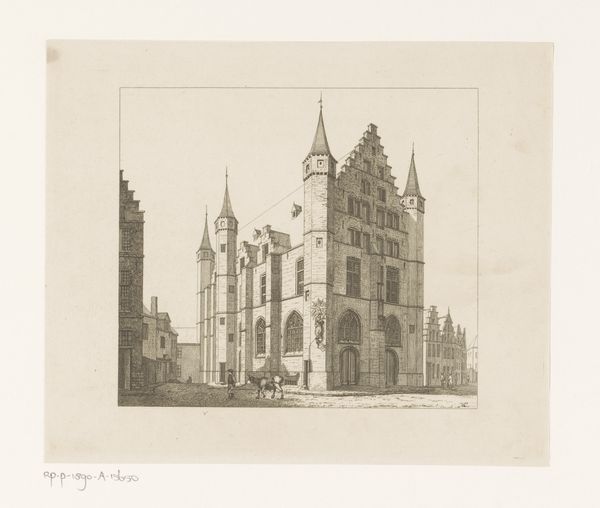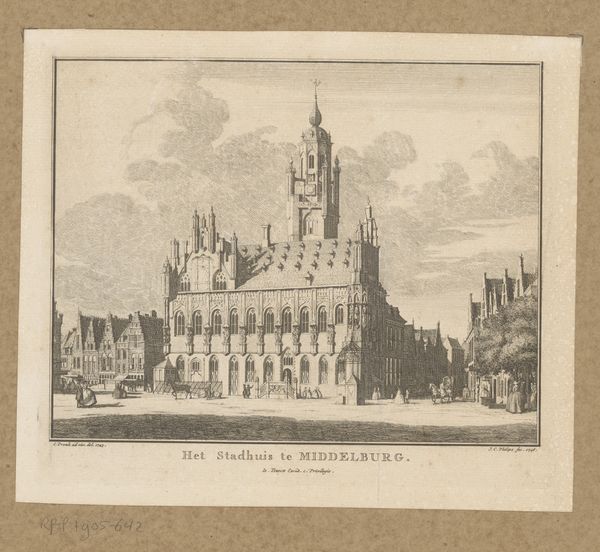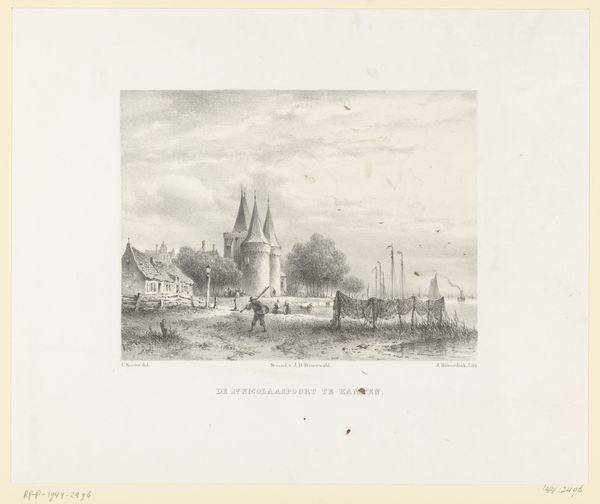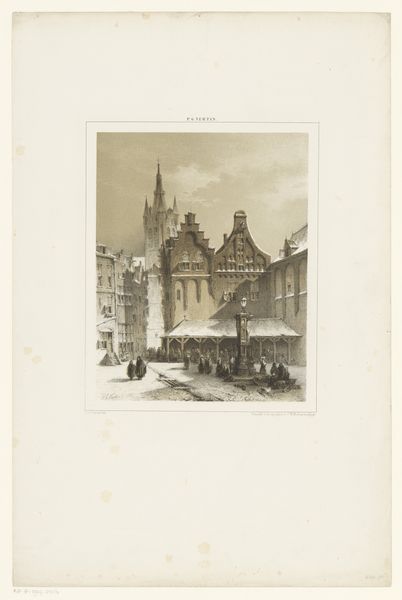
Dimensions: height 292 mm, width 434 mm
Copyright: Rijks Museum: Open Domain
Curator: What a fantastically detailed cityscape! Editor: Yes, there's a real weight to it. It's almost oppressive. So much visual information, and rendered with such precision. Curator: This is Louis Lebreton’s "Zicht op de apsis van de Sint-Petruskerk te Caen," made between 1855 and 1859. It’s an engraving, a type of printmaking. Editor: The material itself – an engraving - speaks to a very specific mode of production. This wasn't quickly sketched; it required skilled labor, a meticulous process of carving and printing. I wonder how readily available these prints were to the average person. Curator: That's key, considering how images were disseminated and consumed in mid-19th century France. The print form meant relative affordability and broader accessibility. Also note how this cityscape, specifically the grandeur of the church and its urban context, is charged with religious and civic significance. It’s a visual assertion of power. Editor: And look at the staging! A deliberately romantic framing of everyday city life against this monumental architecture of state and faith. The figures milling about – who are they meant to represent? What classes, what labors are present, and what's absent? Curator: Well, it romanticizes a particular relationship between the population and institution. The historical context here is vital; Consider post-revolution France. These structures and scenes are symbols as much as depictions. Editor: It also hints at a constructed reality, a conscious shaping of public perception through image making, the slow labor needed in print making. This image serves, and continues to serve, as both art object and cultural artifact. Curator: Precisely, and examining it through its history unveils just that. The museum or archive displays aren't passive repositories, but active sites of meaning creation. It’s never just about the visual. Editor: It's about the entire system of its production, consumption, and continued life as an image object! An engaging look, thanks. Curator: Indeed! It truly brings new dimensions to understanding the intersection of power, people, and the built world of that era.
Comments
No comments
Be the first to comment and join the conversation on the ultimate creative platform.
